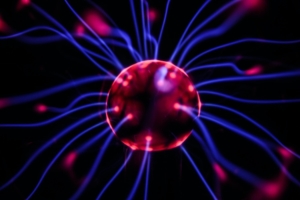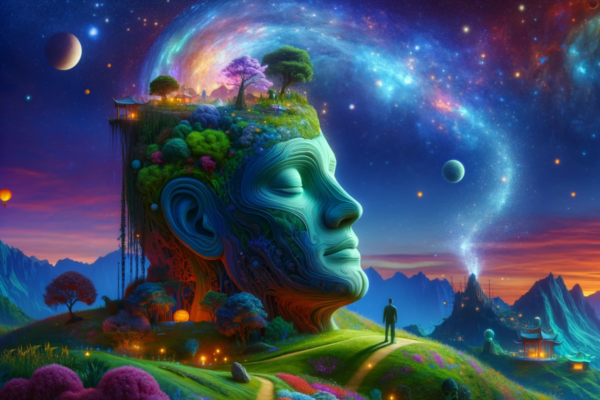
Although all genders are susceptible to mental health issues, women’s mental health has shown to be disproportionately affected by problems including depression, anxiety and somatic complaints.
These disorders affect approximately one in three people in our society, constituting a serious global health problem. Traditional therapy and pharmaceutical drugs are failing where studies suggest psychedelic medicine succeeds.
As the psychedelic renaissance booms, here are four major women’s mental health issues that psychoactive substances like psilocybin, MDMA, ayahuasca, ibogaine, and ketamine can help relieve.
1. Depression
Studies show that women have twice as much depression as men. Hormonal changes are one of the factors that contribute to women being more predisposed to depression, as well as other disorders. Symptoms of depression are more frequent during the pregnancy and puerperium period than at other stages of a woman’s life.
Postpartum depression is a very common women’s mental health disorder. As many as 10% of mothers suffer from major depression in this period and up to 30% have been found to suffer from minor depression or dysthymia. Symptoms can take anywhere between two weeks and three months to develop.
Psilocybin, ketamine, and other psychedelics have been studied in recent years to treat various types of depression. Johns Hopkins Medicine researchers, for example, found two doses of psilocybin, given with supportive psychotherapy, produced rapid and large reductions in depressive symptoms in a small study of adults with major depression. A ketamine study on subjects with treatment-resistant depression demonstrated the psychoactive substance to berapidly effective. Patients showed significant clinical improvement in depressive symptoms within hours after administration.
A clinical trial on the use of ketamine for preventing postpartum depression was conducted on 134 women undergoing scheduled caesarian sections. The results showed that using ketamine in the induction of general anesthesia could be effective in preventing depression.
2. Eating Disorders
Anorexia nervosa is a mental illness that affects about 30 million Americans that manifests itself as an eating disorder, characterized by abnormally low body weight, distortion of body image, and fear of gaining weight. People with the disease often take extreme measures to control their weight and eating habits, which can be dangerous.
A fact that many do not know is that anorexia is responsible for more deaths than any other mental illness. This is due in part to the disease’s physically debilitating nature, but it’s also owing to the fact that medical specialists have yet to discover an effective treatment for the disorder.
A new Johns Hopkins Medicine trial will study the effectiveness of psilocybin in the treatment of eating disorders. Although this is the first study to examine psilocybin as a treatment for anorexia, initial research with other psychedelics is promising. A 2017 study examined people with eating disorders who took part in an ayahuasca ceremony. 11 of the participants claimed their symptoms improved as a result of the experience, and 14 felt the medicine improved their emotional regulation.
The failure of treatment options for eating disorders is due to the disease’s “ego-syntonic” nature, concluded a review in 2013. That basically means that many of the behaviors, values, and feelings that underpin disease symptoms are driven by the ego’s needs and goals.
The psychedelic experience is known for dissolving the ego: it allows people to be able to obtain a fresh view of themselves, the world around them, and their place in it. This profound experience triggers long-term healing and mental health benefits by allowing individuals to get to the root of their issues, instead of just masking the symptoms with current pharmaceutical drugs that are available.
3. PTSD
PTSD is a complex disease characterized by changes involving four main symptoms: avoidance, the presence of symptoms that make the patient relive the experience, negative changes in cognition and mood, and changes in arousal and reactivity. This occurs after exposure to intense trauma, which can be a natural disaster, sexual violence, or other forms of life-threatening events.
PTSD affects about 6% of men and as many as 12% percent of women in their lifetime. This means that women suffer from PTSD at nearly twice the rate as men. Women’s PTSD also lasts longer and puts them at a higher risk of developing chronic PTSD than men.
MAPS has recently published the results of its study on MDMA-assisted therapy for the treatment of severe PTSD. The goal was to check if whether MDMA-assisted therapy could help with the treatment of psychological and emotional damage caused by sexual assault, wars, and other trauma. The study found a 60% success rate, and two-thirds of the 91 participants no longer met the criteria for PTSD.
4. Addiction
Men are more likely than women to abuse drugs and alcohol. Women, on the other hand, are more likely to visit the emergency room or overdose tragically as a result of substance usage.
The distinctions between men and women suffering from addiction are influenced by biological and sociological differences. And often because of stigma, women are less likely to look for medical help when going through problems with addiction.
Psychedelics have been the subject of numerous studies in the realm of addiction since the 1950s, indicating psychedelic-assisted therapy can treat multiple substance addictions. A few promising areas include LSD and peyote for alcoholism and ibogaine for opioid addiction.
A MAPS observational study of the long-term effects of ibogaine treatment in Mexico found it to be “a substantive treatment effect in opioid detoxification.” Another study done in Brazil, where ibogaine is unregulated, suggests the psychoactive alkaloid can be a safe and effective treatment for dependence on stimulant and other non-opiate drugs, as well, including crack, cocaine, and alcohol. Participants who took one dose of ibogaine reported abstinence for a median of 5.5 months and those treated multiple times for a median of 8.4 months.
To read more of Jessika Lagarde’s work covering psychedelics, visit Women on Psychedelics.





